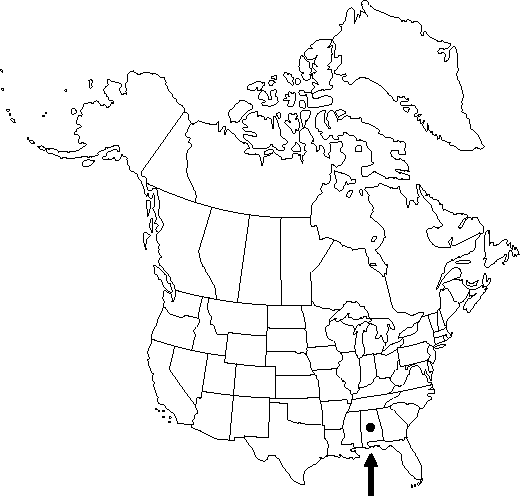Difference between revisions of "Hexastylis speciosa"
Torreya 24: 79-80. 1924.
Conservation concernEndemic
Synonyms: Asarum speciosum (R. M. Harper) Barringer
Treatment appears in FNA Volume 3.
FNA>Volume Importer |
imported>Volume Importer |
||
| (7 intermediate revisions by 2 users not shown) | |||
| Line 18: | Line 18: | ||
|name=Asarum speciosum | |name=Asarum speciosum | ||
|authority=(R. M. Harper) Barringer | |authority=(R. M. Harper) Barringer | ||
| + | |rank=species | ||
}} | }} | ||
|hierarchy=Aristolochiaceae;Hexastylis;Hexastylis speciosa | |hierarchy=Aristolochiaceae;Hexastylis;Hexastylis speciosa | ||
| Line 26: | Line 27: | ||
}}<!-- | }}<!-- | ||
| − | --><span class="statement" id="st- | + | --><span class="statement" id="st-undefined" data-properties=""><b>Rhizomes:</b> internodes short, leaves crowded at rhizome apex. <b>Leaf</b> blade variegate or not, triangular to broadly triangular, subhastate. <b>Flowers</b>: calyx tube abruptly contracted near middle, proximally narrowly cup-shaped, distally broadly cylindric, 10-20 × 10-20 mm, inner surface with well-developed reticulations, lobes spreading, 4-8 × 6-8 mm, adaxially puberulent; stamen connective extending slightly beyond pollen sacs; ovary ca. 1/3-inferior; ovules ca. 6 per locule; style 2-cleft to stigma. <b>2n</b> = 26.</span><!-- |
-->{{Treatment/Body | -->{{Treatment/Body | ||
| Line 34: | Line 35: | ||
|distribution=Ala. | |distribution=Ala. | ||
|discussion=<p>Of conservation concern.</p><!-- | |discussion=<p>Of conservation concern.</p><!-- | ||
| − | --><p>Hexastylis speciosa is endemic to a small area north of Montgomery, Alabama.</p> | + | --><p><i>Hexastylis speciosa</i> is endemic to a small area north of Montgomery, Alabama.</p> |
|tables= | |tables= | ||
|references= | |references= | ||
| Line 43: | Line 44: | ||
-->{{#Taxon: | -->{{#Taxon: | ||
name=Hexastylis speciosa | name=Hexastylis speciosa | ||
| − | |||
|authority=R. M. Harper | |authority=R. M. Harper | ||
|rank=species | |rank=species | ||
| Line 58: | Line 58: | ||
|publication year=1924 | |publication year=1924 | ||
|special status=Conservation concern;Endemic | |special status=Conservation concern;Endemic | ||
| − | |source xml=https:// | + | |source xml=https://bitbucket.org/aafc-mbb/fna-data-curation/src/2e0870ddd59836b60bcf96646a41e87ea5a5943a/coarse_grained_fna_xml/V3/V3_378.xml |
|genus=Hexastylis | |genus=Hexastylis | ||
|species=Hexastylis speciosa | |species=Hexastylis speciosa | ||
| − | |||
| − | |||
| − | |||
| − | |||
| − | |||
| − | |||
| − | |||
| − | |||
| − | |||
| − | |||
| − | |||
| − | |||
| − | |||
| − | |||
| − | |||
}}<!-- | }}<!-- | ||
-->[[Category:Treatment]][[Category:Hexastylis]] | -->[[Category:Treatment]][[Category:Hexastylis]] | ||
Latest revision as of 22:48, 5 November 2020
Rhizomes: internodes short, leaves crowded at rhizome apex. Leaf blade variegate or not, triangular to broadly triangular, subhastate. Flowers: calyx tube abruptly contracted near middle, proximally narrowly cup-shaped, distally broadly cylindric, 10-20 × 10-20 mm, inner surface with well-developed reticulations, lobes spreading, 4-8 × 6-8 mm, adaxially puberulent; stamen connective extending slightly beyond pollen sacs; ovary ca. 1/3-inferior; ovules ca. 6 per locule; style 2-cleft to stigma. 2n = 26.
Phenology: Flowering spring (April-May).
Habitat: Shaded sites, well-drained sandy loam in open pine-deciduous forests above acidic streams or bogs
Elevation: 70 m
Discussion
Of conservation concern.
Hexastylis speciosa is endemic to a small area north of Montgomery, Alabama.
Selected References
None.
Lower Taxa
None.
